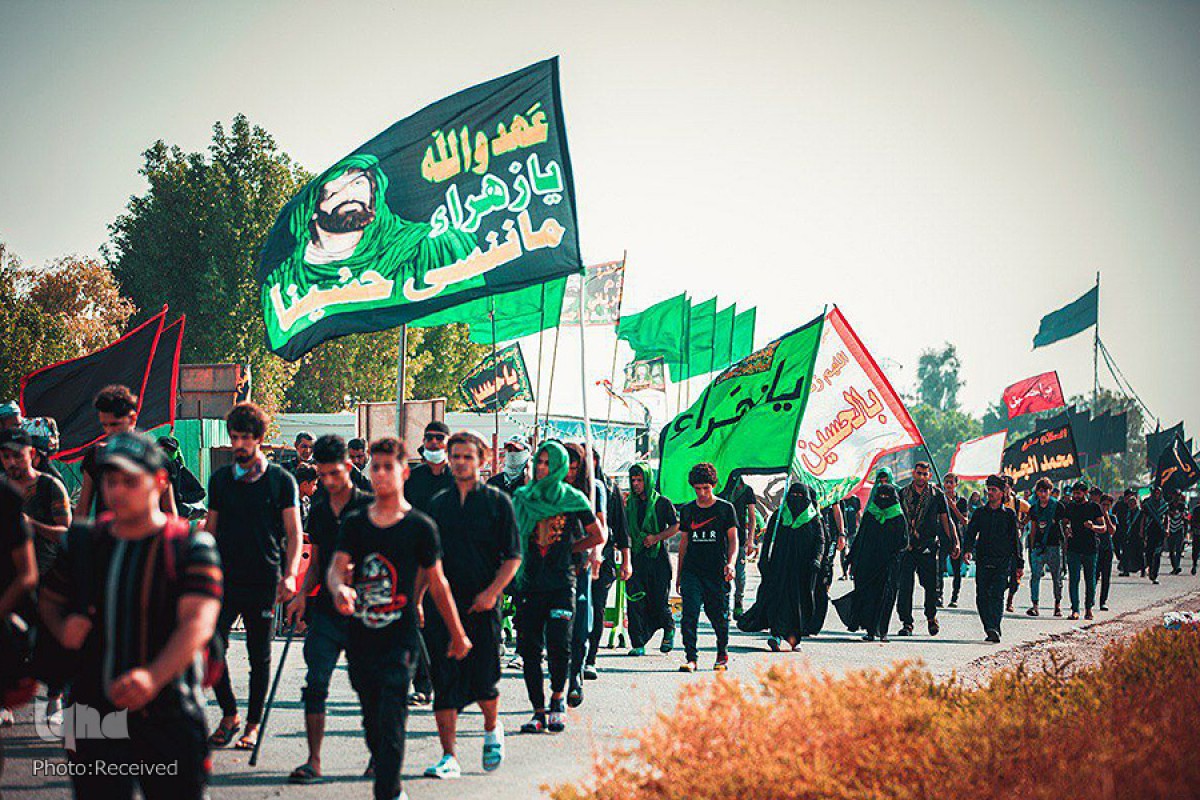 181
181
The barefoot pilgrimage to Karbala on the occasion of Arabaeen marks the end of a 40-day mourning period following Ashura, the religious ritual commemorating the martyrdom of the Prophet Muhammad’s adored grandson, Imam Hussein—is a centuries-old tradition. Conducting the Arbaeen pilgrimage was a difficult challenge in most historical periods, and the lives of the Shiite pilgrims were constantly in jeopardy. Despite the hazards, the pilgrims participated in this epic event. Saddam’s Ba’athist regime denounced the Arbaeen pilgrimage, and all those who participated in the journey were summarily put to death.
Nonetheless, the subjugated Iraqi Shiites still observed this sacred ritual covertly.
Following the collapse of Saddam’s dictatorship in 2003, the Arbaeen procession was again revived. Since then, millions of devotees have participated in this spiritual ritual, drawing a larger crowd each year.
Later, the Arbaeen march continued earnestly despite the ominous emergence of ISIS and the looming risk of Takfiri terrorist attacks on chivalrous pilgrims.
In the meantime, the Iraqi Popular Mobilization Forces (PMF) and other armed forces affiliated with the Axis of Resistance assumed the responsibility of providing security for this enormous ceremony, to the extent that today, millions of pilgrims from all over the world converge on Karbala, making it the largest religious pilgrimage in the world.
The Axis of Resistance is a regional geopolitical alliance made up of ally governments such as Iran, Iraq, and Syria, as well as Lebanon’s Hezbollah, Iraq’s PMF, Yemen’s Ansar Allah, and Palestine’s Hamas, which share ideological goals and endeavour to maintain peace and stability in the tumultuous Middle East region.
The positive outcomes of ensuring the security of the Arbaeen procession by the Axis of Resistance reflected themselves in various sociopolitical and cultural facets. Despite the political vicissitudes in Iraq and the inadvertent rise of divisions among Iraqi officials and mischief by regional enemies, the Axis of Resistance managed to protect millions of pilgrims in a geographically vast region, which is a clear illustration of the ultimate strength of the Iran-led Axis of Resistance.
According to observers, the Arbaeen pilgrimage is organised better each year. In this context, the Iranian army helicopters are tasked with providing aerial support, transporting ill pilgrims, and moving necessary accommodations.
In close cooperation with the Iraqi PMF, the Islamic Revolutionary Guard Corps (IRGC) has also made significant strides in ensuring the security of the Arbaeen procession. Therefore, the Arbaeen movement can be regarded as a remarkable symbol of cross-ethnic fraternity, unity, harmony, and solidarity.
In the meantime, the Arbaeen pilgrimage refutes the misleading impression of animosity between Arabs and non-Arabs, Turks and Persians, Shiites and Sunnis, and by thwarting the psychological tactics of regional enemies.
Furthermore, it demonstrates the awakening of the Muslim nations and their keen understanding of their shared religious values.
The infatuating message of Arbaeen has the potential to incite a strong wave of awareness across the Middle East, which would ultimately lead to political independence, security, and stability.
On a global scale, the security of the Arbaeen pilgrimage can display the peaceful essence of Islam, the depth of Islamic brotherhood, devotion, and passion, thereby rebutting false and erroneous views against Islam.
To summarise, it is essential to highlight that the security provided by Iranian-backed resistance forces during the Arbaeen procession thwarted terrorist assaults by Takfiri terrorists, who have utterly failed in their nefarious crimes to disrupt the Arbaeen pilgrimage.
Comment
Post a comment for this article